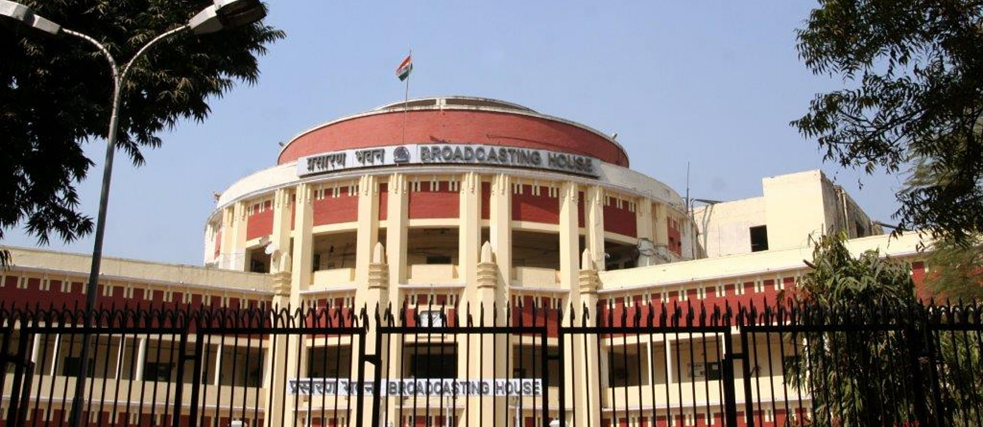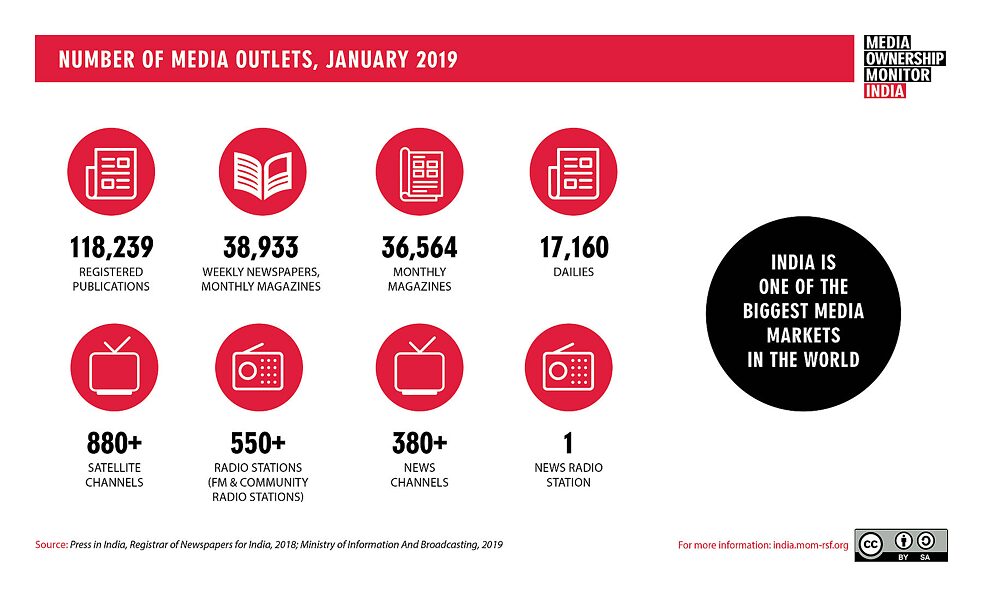Land of a thousand voices
India’s changing media landscape

Over the past 25 years, the Indian media market - largely unnoticed by the rest of the world - has changed dramatically thanks to digitalisation, economic boom and the needs of a new urban middle class.
By Ramesh Menon
India has one of the most exciting media landscapes in the world. It is a huge evolving market throbbing with activity, change, and experimentation. Ironically, it is also enveloped in anachronisms.
Where else in the world would you find a landscape as rich and varied as India’s with nearly 900 TV channels, over 550 radio stations, 100 million registered publications. 560 million people use the internet, 400 million are on WhatsApp, 260 million on Facebook, 200 million used TikTok before its ban in India. 80 million have Instagram accounts, Telegram has over 30 million active users, and 12 million Twitter accounts according to data by Sannam S4.
Much of this frenetic activity happened in the last few years dramatically punctuating the scene and pushing conventional media of print and television away from the frontline. Traditional media is aggressively jostled with social media, blogs, news websites and messaging apps, triggering a new revolution and changing lives in both urban and rural India.
An overnight change for millions
Internet usage shot up among the Indian lower middle class when Reliance Industries Limited, India’s largest multinational conglomerate, launched Jio, a broadband service with exceptionally low tariffs, that emerged as a complete digital services platform.Overnight, millions of Indians were able to access news, YouTube videos, and social media platforms. Suddenly, information, disinformation, misinformation, fake news and instant gratification became the new normal! This newly emerged power was instantly seized by many political parties, especially the right-wing parties to reach out to voters and push their campaign. They enrolled over 100 million subscribers within the first three months of Jio’s launch. This became a boon to many political parties that used both conventional and social media to market their campaign, shatter the opposition and change India’s political history.
Tweets became news
In the 2014 parliamentary elections, media played a major role in showcasing the right-wing leaders as aggressive politicians who would boost India’s economy as the party in power. Social media was used extensively to further the party’s agenda, and Twitter became a platform to convey not only news stories but also important policy announcements.Ministers and bureaucrats were advised to avoid the media, but they eventually fell into line and also started tweeting. And so, tweets became news! Earlier, journalists benefitted by getting a larger picture and a perspective on governance, but gradually, it became difficult to break stories, get inside information or conduct investigations into government actions and policies, since those who went against the government were slammed with defamation notices. No wonder India ranked 142th out of 180 countries in the World Press Freedom Index 2020 of Reporters Without Borders.
The transformation of media management
The stinging journalism that punctuated the Indian political firmament, where governments, politicians and business magnates were exposed, had tapered off. Those like The Wire and Caravan, who conducted investigations into government actions, were slapped with defamation notices intended as warnings.Journalists critical of the government were shown the door by their employers. Owners of most media organisations in India have multiple business interests, media being one of them. Many a time, these are just masquerades to more political clout.
Fake news is all over the place. For instance, during the COVID-19 pandemic, public anxiety and scare was populated by rounds of fake news ranging from home-remedies to vaccine inventions. The proliferation of misinformation, fortunately, also gave birth to fake news busters like Boom Live, AltNews or SMHoaxSlayer.
Drawing the curtain
With an ever-increasing reach, Indian regional media holds opportunities for growth like never before. Hindi, Malayalam, Tamil, Bengali, Marathipapers reach out to millions of people every day. Hindi newspapers like Dainik Bhaskar, Dainik Jagran, Hindustan, Rajasthan Patrika, Amar Ujala have a circulation of over 100,000 copies a day, as do Malayalam papers Manorama and Mathrubhumi or Sakal in Marathi.However, monopolisation and corporatisation of the media have rung the death knell for Indian media as their vested interests cannot make it uphold the best traditions of journalism. In a democracy like India, this can be dangerous as millions are illiterate and get swayed by propaganda and fake news. Narrow interests are likely to manipulate public opinion and marginalise the disadvantaged. It is frightening to imagine what role the media will play in a changing India that is witnessing polarisation of caste, creed, and religion.
It does not sound like a good story.


Comments
Comment